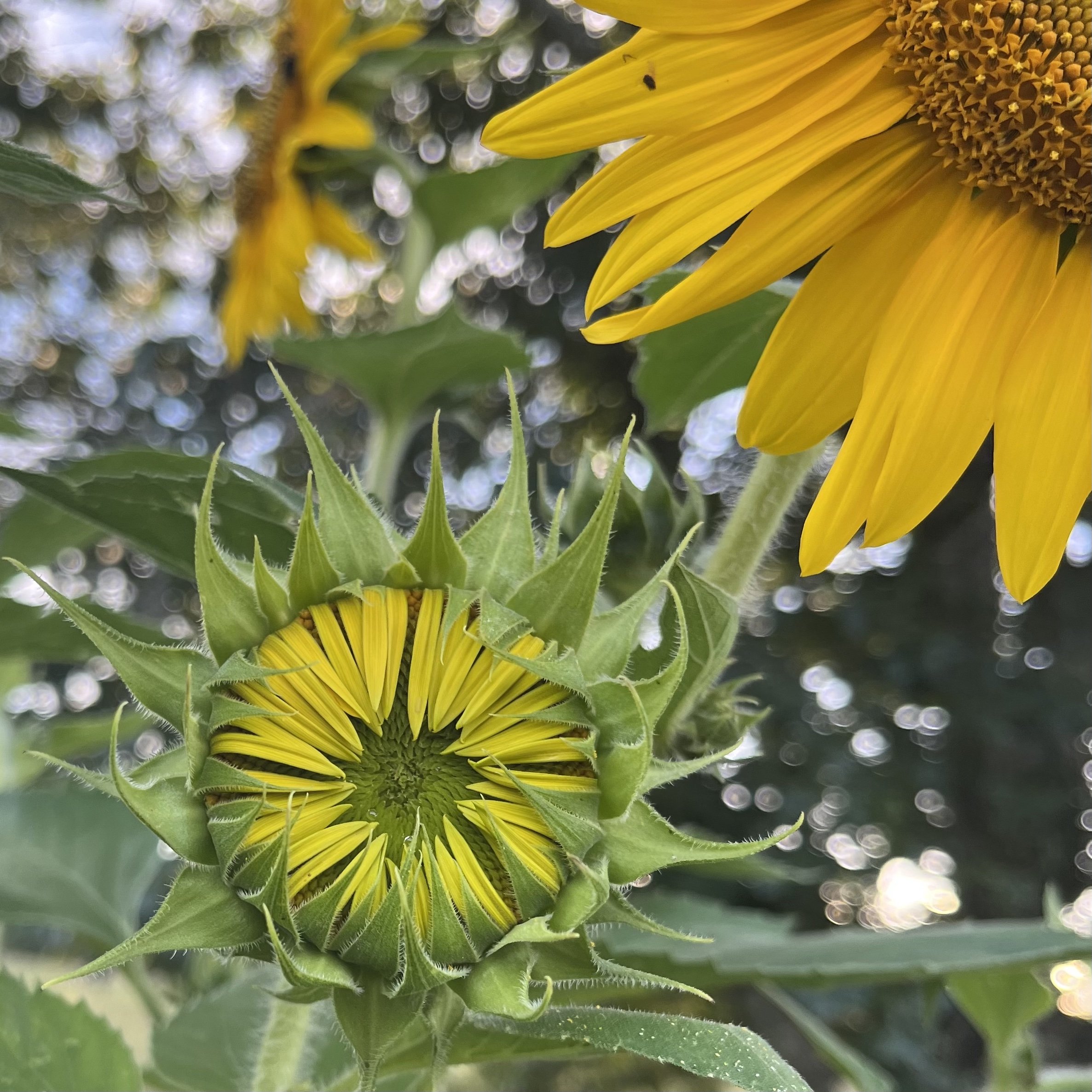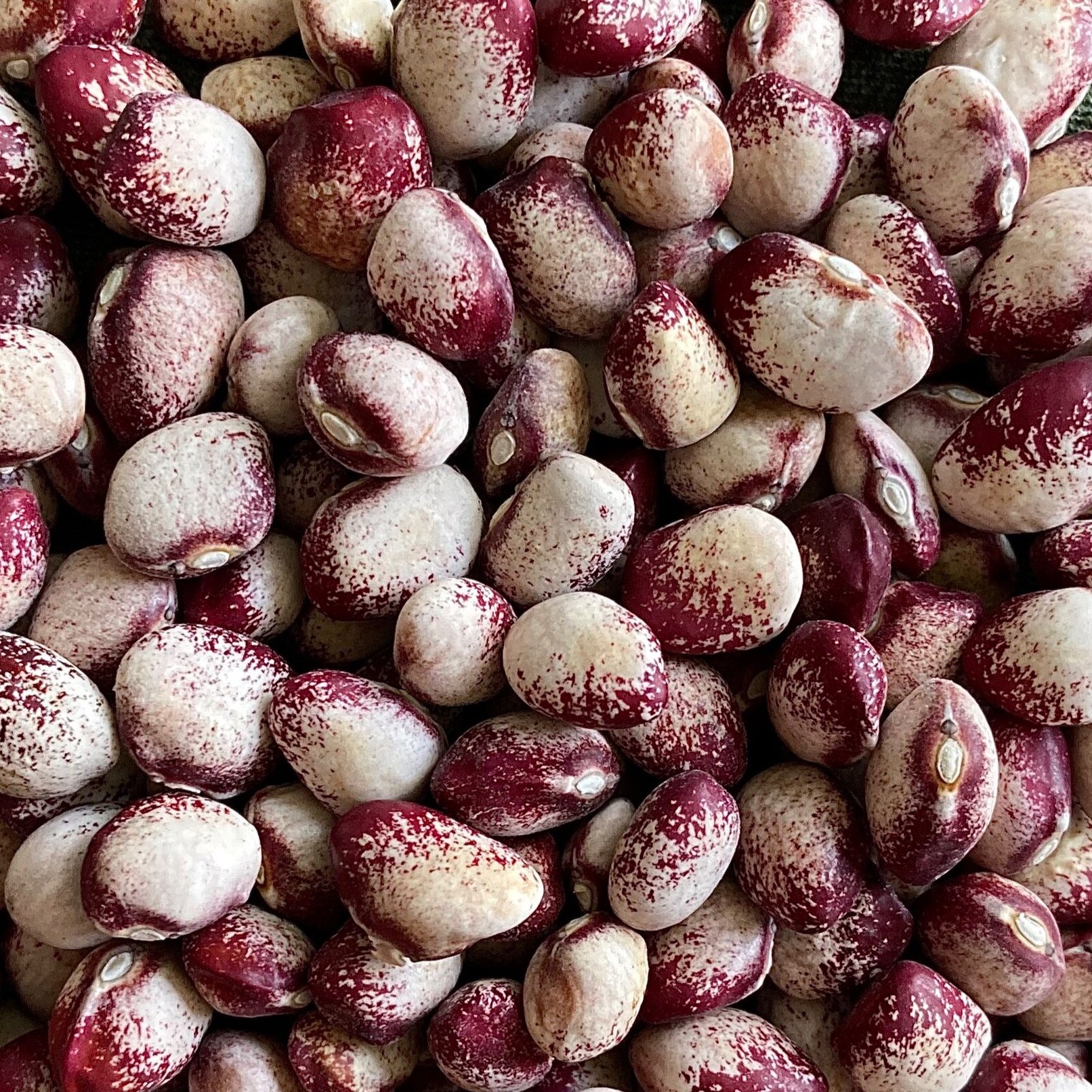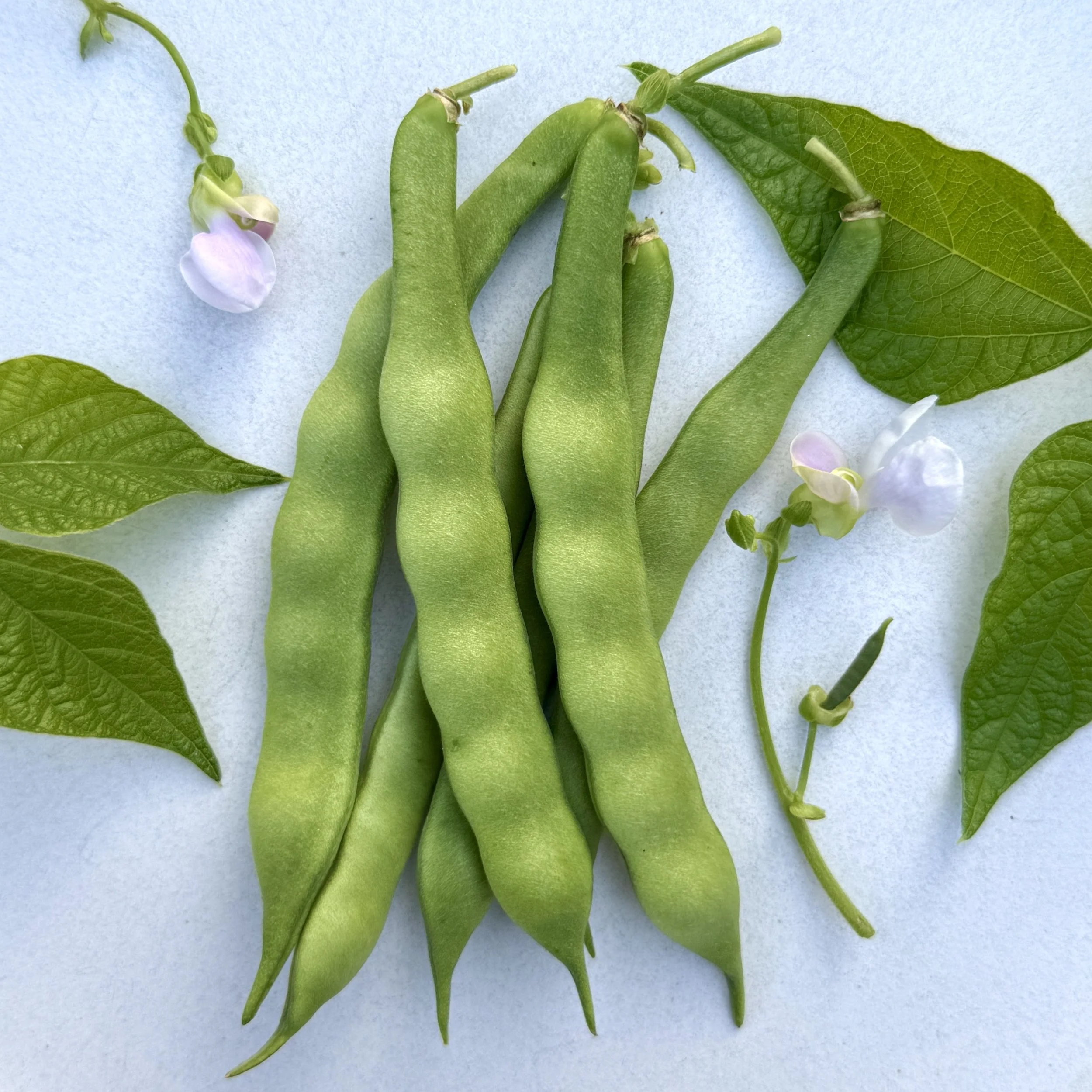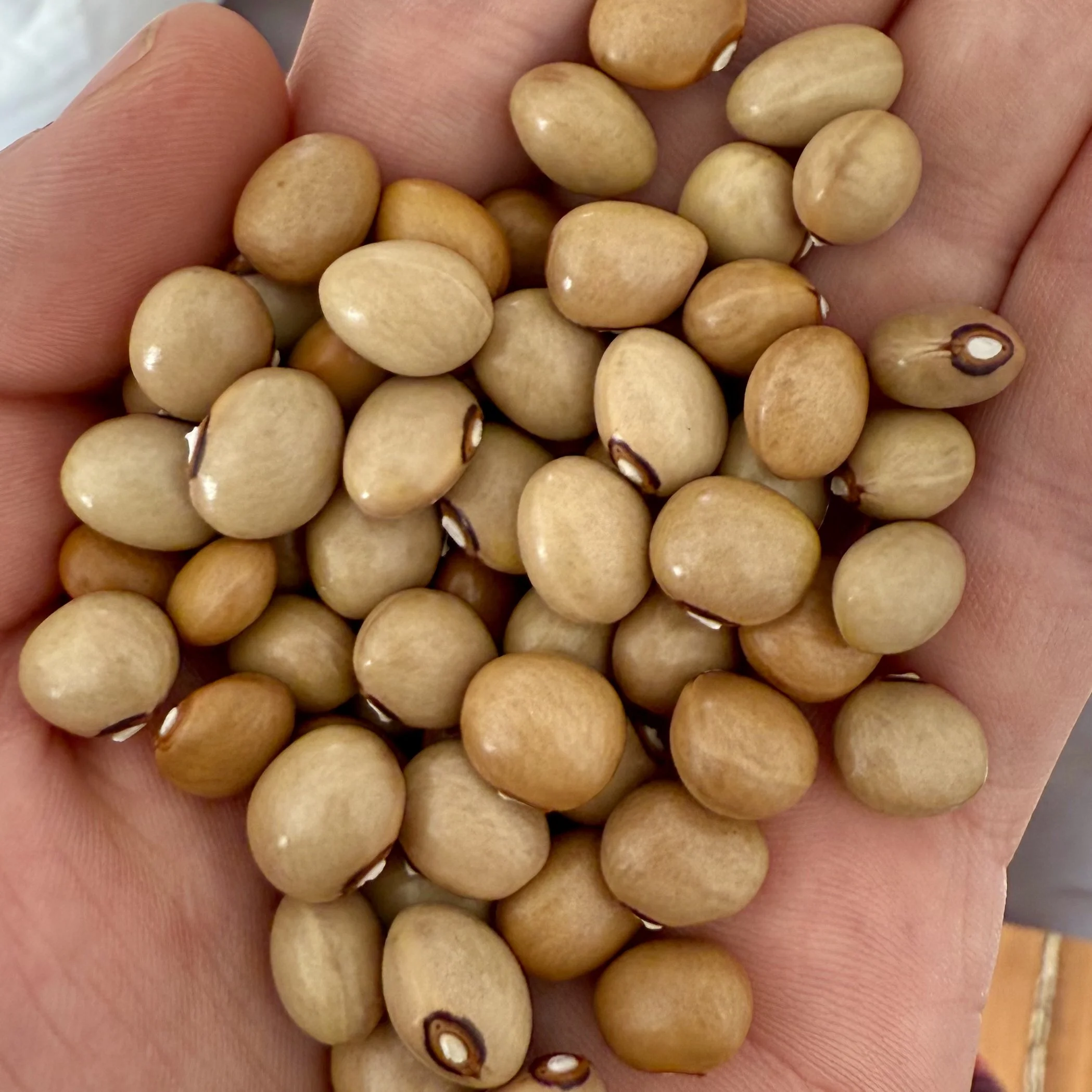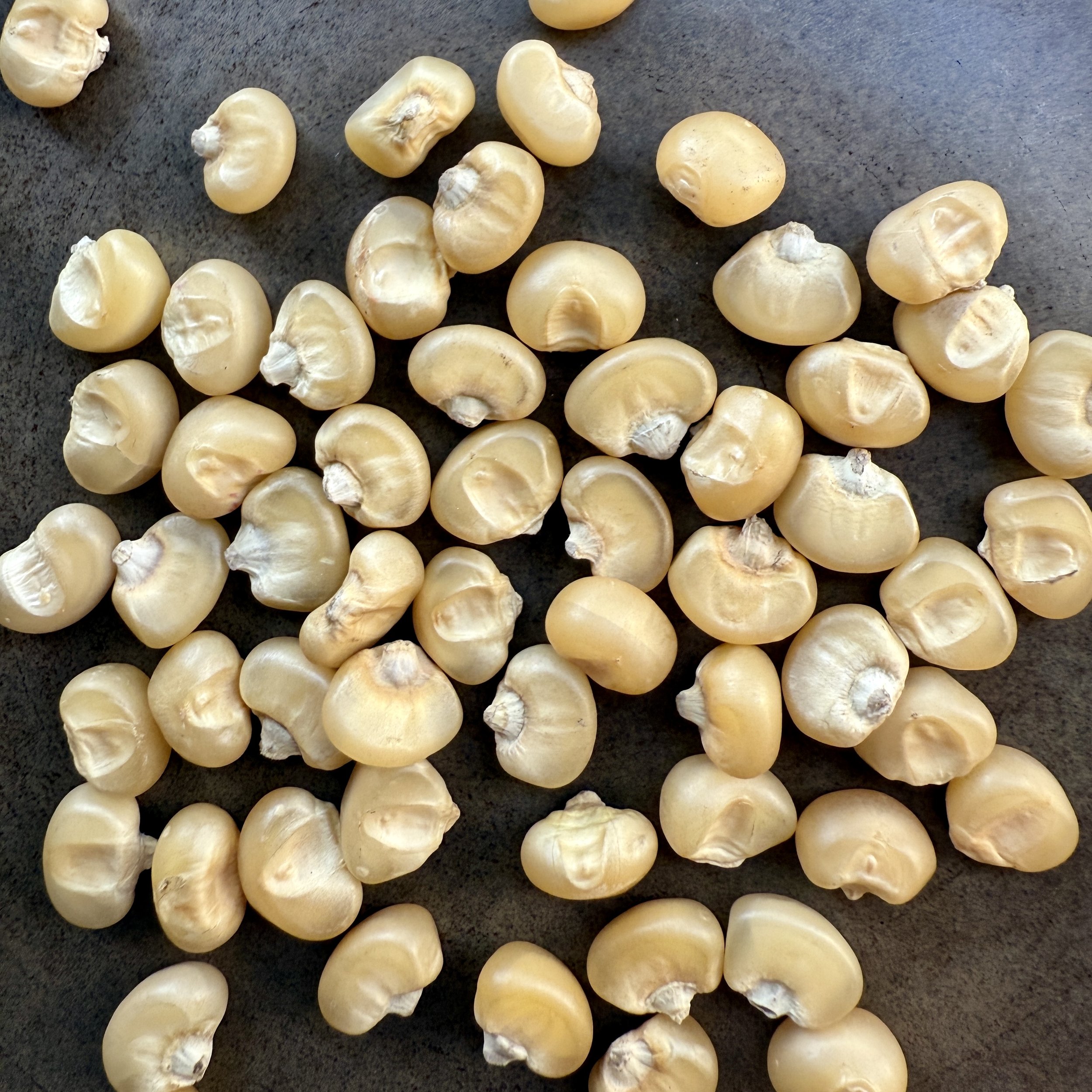 Image 1 of 1
Image 1 of 1


Flint Corn, Narragansett White
Product Description: (Zea mays) Also known as Rhode Island White Cap or Johnny Cake Corn, Narrragansett White is among the most famous and highest yielding (60-70 bu/acre) eight-rowed flint corn varieties available. This variety stands apart from other Northeastern flints in color as well, ranging slightly from ivory-white to light amber. Open-pollinated. 50 seeds per packet.
Historical Note: When uncovering a variety’s history, cultural myths and tribal folklore can offer valuable insights that modern researchers often overlook. Narragansett White Flint Corn (also known as Rhode Island White Cap) is an excellent example of this.
According to Narragansett oral tradition, their people once endured a particularly harsh winter, prompting them to ask the Creator for guidance. In response, they were instructed to send their strongest warrior on a journey to the Southwest in search of a solution. Upon this warrior’s return, he carried seeds of a high-yielding white flint corn — which would sustain the Narragansett people for generations to come.
For a long time, historians dismissed stories like this as mere legend. But centuries later, ethnobotanists confirmed what this story had long preserved: the origin of Narragansett White Flint Corn does, in fact, trace back to the American Southwest. Some of the most revealing historical evidence is often found with the people who have grown a variety the longest (even if you have to read between the lines a bit).
Growing Information: Direct seed in full sun after all danger of frost has passed. Sow seeds 5 cm (2 inches) deep and 25 cm (10 inches) apart in rows 60-100cm (2-3 feet) apart. Or plant as many indigenous people did, in tight clusters of 4-5 plants, separated from each other by about 1 meter (3 feet).
Once the husks are thoroughly dry and the kernels can no longer be dented with your fingernail, the ears are ready for harvest. Store in a cool, dry place to continue drying until the kernels can be easily removed from the cob, like loose teeth. 115 days to maturity.
How To Save Corn Seeds
Saving corn seeds is incredibly simple! Once the ears are dried thoroughly, peel back the papery husks and work the seeds loose with your thumb. Dry further if needed, then atore the seeds in a cool, dry location until you are ready to plant again.
Germination Rate: 90%
Product Description: (Zea mays) Also known as Rhode Island White Cap or Johnny Cake Corn, Narrragansett White is among the most famous and highest yielding (60-70 bu/acre) eight-rowed flint corn varieties available. This variety stands apart from other Northeastern flints in color as well, ranging slightly from ivory-white to light amber. Open-pollinated. 50 seeds per packet.
Historical Note: When uncovering a variety’s history, cultural myths and tribal folklore can offer valuable insights that modern researchers often overlook. Narragansett White Flint Corn (also known as Rhode Island White Cap) is an excellent example of this.
According to Narragansett oral tradition, their people once endured a particularly harsh winter, prompting them to ask the Creator for guidance. In response, they were instructed to send their strongest warrior on a journey to the Southwest in search of a solution. Upon this warrior’s return, he carried seeds of a high-yielding white flint corn — which would sustain the Narragansett people for generations to come.
For a long time, historians dismissed stories like this as mere legend. But centuries later, ethnobotanists confirmed what this story had long preserved: the origin of Narragansett White Flint Corn does, in fact, trace back to the American Southwest. Some of the most revealing historical evidence is often found with the people who have grown a variety the longest (even if you have to read between the lines a bit).
Growing Information: Direct seed in full sun after all danger of frost has passed. Sow seeds 5 cm (2 inches) deep and 25 cm (10 inches) apart in rows 60-100cm (2-3 feet) apart. Or plant as many indigenous people did, in tight clusters of 4-5 plants, separated from each other by about 1 meter (3 feet).
Once the husks are thoroughly dry and the kernels can no longer be dented with your fingernail, the ears are ready for harvest. Store in a cool, dry place to continue drying until the kernels can be easily removed from the cob, like loose teeth. 115 days to maturity.
How To Save Corn Seeds
Saving corn seeds is incredibly simple! Once the ears are dried thoroughly, peel back the papery husks and work the seeds loose with your thumb. Dry further if needed, then atore the seeds in a cool, dry location until you are ready to plant again.
Germination Rate: 90%

